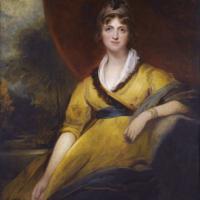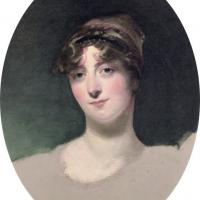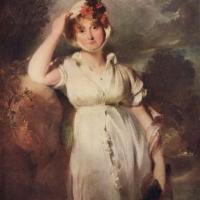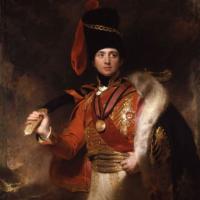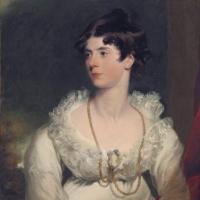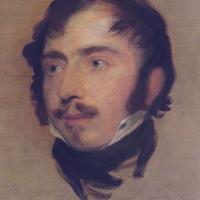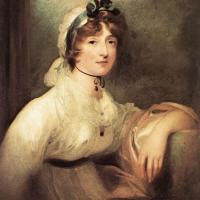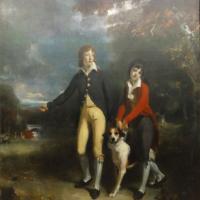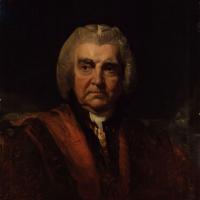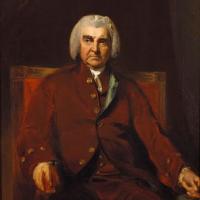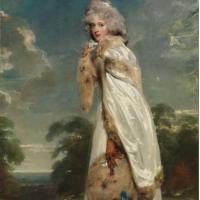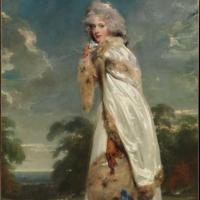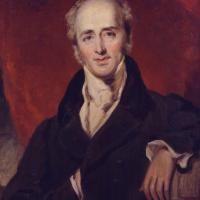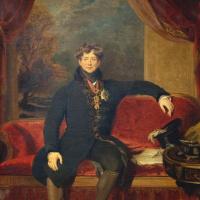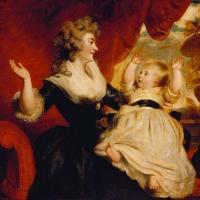Sir Thomas Lawrence
Admiral John Markham
$480.00
Amusement At Goksu
$450.00
Caroline
$480.00
Caroline Matilda Sotheron
$480.00
Charles Stewart
$480.00
Colonel Thomas Wildman
$480.00
Diana Sturt, Lady Milner
$480.00
Edward, Lord Thurlow
$480.00
Elizabeth Farren
$480.00
Emily Harriet Wellesley Pole
$480.00
Fetes Venitiennes
$480.00
Francis Osborne
$480.00
Frederick Baron Von Gentz
$480.00
French Riviera
$480.00
George IV
$480.00
Sir Thomas Lawrence
Sir Thomas Lawrence (1769-1830)
Sir Thomas Lawrence (13 April 1769 – 7 January 1830) was a leading English portrait painter and the fourth president of the Royal Academy.
Lawrence was a child prodigy. He was born in Bristol and began drawing in Devizes, where his father was an innkeeper at the Bear Hotel in the Market Square. At the age of ten, having moved to Bath, he was supporting his family with his pastel portraits. At eighteen he went to London and soon established his reputation as a portrait painter in oils, receiving his first royal commission, a portrait of Queen Charlotte, in 1790. He stayed at the top of his profession until his death, aged 60, in 1830.
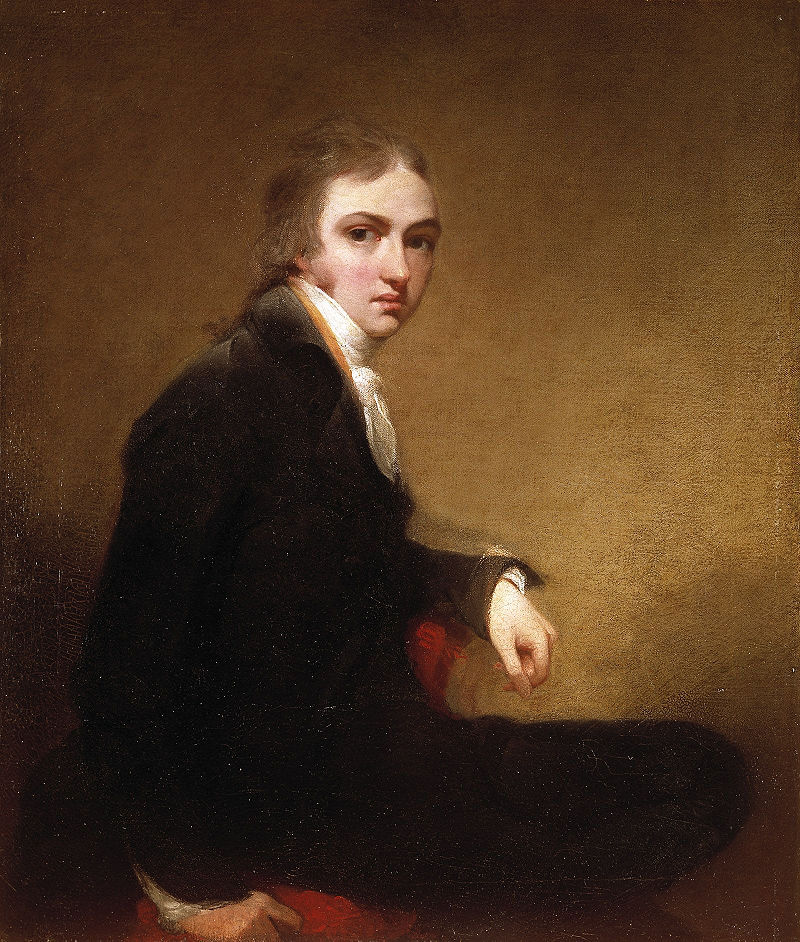
Self-taught, he was a brilliant draughtsman and known for his gift of capturing a likeness, as well as his virtuoso handling of paint. He became an associate of the Royal Academy in 1791, a full member in 1794, and president in 1820. In 1810 he acquired the generous patronage of the Prince Regent, was sent abroad to paint portraits of allied leaders for the Waterloo chamber at Windsor Castle, and is particularly remembered as the Romantic portraitist of the Regency. Lawrence's love affairs were not happy (his tortuous relationships with Sally and Maria Siddons became the subject of several books) and, in spite of his success, he spent most of life deep in debt. He never married. At his death, Lawrence was the most fashionable portrait painter in Europe. His reputation waned during Victorian times, but has since been partially restored.
Lawrence's friends asked the Scottish poet Thomas Campbell to write the artist's biography, but he passed the task on to D.E. Williams whose two rather inaccurate volumes were published in 1831. It would be nearly 70 years later, in 1900, before another biography of Lawrence appeared, this time by Lord Ronald Gower. In 1913 Sir Walter Armstrong, who was not a great admirer of Lawrence, published a monograph. The 1950s saw the publication of two further works: Douglas Goldring's Regency portrait painter, and Kenneth Garlick's catalogue of Lawrence's paintings (a further edition was published in 1989). Sir Michael Levey, curator of the National Portrait Gallery's 1979–80 Lawrence exhibition, produced books on the artist in 1979 and 2005. Lawrence's entanglements with the Siddons family has been the subject of three books (by Oswald Knapp, André Maurois, and Naomi Royde-Smith) and a recent radio play.
Lawrence's reputation as an artist fell during the Victorian era. Critic and artist Roger Fry did something to restore it in the 1930s, when he described Lawrence as having a "consummate mastery over the means of artistic expression" with an "unerring hand and eye". At one time Lawrence was more popular in the United States and France than he was in Britain, and some of his best known portraits, including those of Elizabeth Farren, Sarah Barrett Moulton (known to her family as Pinkie), and Charles Lambton (the "Red Boy") found their way to the United States during the early 20th century enthusiasm there for English portraits. Sir Michael Levey acknowledges that Lawrence is still dismissed by some art historians; his explanation is that "He was a highly original artist, quite unexpected on the English scene: self-taught, self-absorbed in perfecting his own personal style, and in effect self-destructing, since he left behind no significant followers or creative influence. Leaving aside Sargent, his sole successor has been not in painting, but in fashionable, virtuoso photography."
The most extensive collections of Lawrence's work can be found in the Royal Collections and the National Portrait Gallery in London. The Tate Britain, the National Gallery and the Dulwich Picture Gallery house smaller collections of his work in London. There are a few examples of his work in the Holburne Museum of Art and the Victoria Art Gallery in Bath, and in Bristol City Museum and Art Gallery. In the United States, The Huntington Library houses Pinkie, and Lawrence's portraits of Elizabeth Farren, Lady Harriet Maria Conyngham, and the Calmady children are in the Metropolitan Museum of Art. In Europe, the Musée du Louvre has a few examples of Lawrence's work, and the Vatican Pinacoteca has a swagger portrait of George IV (presented by the king himself) as almost its only British work.
In 2010 the National Portrait Gallery held a retrospective exhibition of Lawrence's work. The director of the National Portrait Gallery, Sandy Nairne, was quoted in the Guardian describing Lawrence as: "a huge figure. But a huge figure who we believe deserves a great deal more attention. He is one of the great painters of the last 250 years and one of the great stars of portraiture on a European stage."



